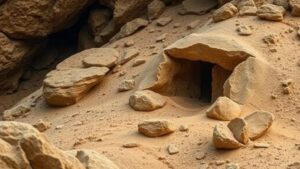The Basics of Gold Flake Recovery in Ancient Stream Mining
The Basics of Gold Flake Recovery in Ancient Stream Mining
Gold flake recovery in ancient stream mining represents a fascinating chapter in the history of mining and metallurgy. Though techniques have evolved significantly over the centuries, understanding the methods used by our ancestors can provide valuable insights into both geological principles and economic practices of the time. This article aims to explore the processes, tools, and significance of gold flake recovery in ancient stream mining, while also addressing some misconceptions about the efficacy and efficiency of these techniques.
The Historical Context of Ancient Stream Mining
Stream mining, particularly for gold, dates back thousands of years. earliest evidence of gold mining is found in ancient civilizations such as Egypt, where artisans refined gold from riverbanks and streams. This method of extraction capitalized on the natural movement of water to separate gold from sediment.
For example, the ancient Greeks utilized simple yet effective techniques in stream mining, employing methods like panning and sluicing. These methods relied on waters ability to displace lighter materials, allowing miners to collect heavier particles like gold flakes. According to the Geographical Journal, the techniques used in these times were surprisingly sophisticated, demonstrating an advanced understanding of the properties of gold and sedimentation.
Methodologies of Gold Flake Recovery
There are several key methodologies employed in the recovery of gold flakes, each offering different advantages and challenges. The primary techniques include panning, sluicing, and using cradle boxes.
- Panning: The most basic method, which involves swirling sediment in a flat pan to separate gold from lighter materials. A specialized technique known as wet panning improves efficiency by using water to aid in the separation.
- Sluicing: This method involves a wooden box with riffles on the bottom, placed in flowing water to catch gold particles as sediment flows through. Gold flakes settle beneath the riffles due to their weight.
- Cradle (Rocking Box): An enhanced form of sluicing, which uses a rocking motion to increase water flow and improve recovery rates. This technique mimicked modern shaking tables and allowed for larger volumes of material to be processed.
Geological Considerations in Gold Flake Recovery
Understanding the geology of stream beds is crucial for effective gold flake recovery. Gold is often found in quartz veins, typically located in mountainous regions. As these veins erode, gold particles are released and are transported downstream via rivers. Key factors influencing gold deposits in streams include:
- Alluvial Deposits: Fluctuations in water flow can create natural traps where denser materials, like gold, settle.
- Geological Composition: The type of underlying rock and sediment plays a crucial role in the presence of gold; streams running through granite and metamorphic rocks often yield higher concentrations.
Challenges Faced in Gold Flake Recovery
While ancient methods were effective to an extent, they were not without challenges. The pursuit of gold flakes in streams often proved labor-intensive and required significant expertise. Key challenges included:
- Labor Intensity: Techniques like panning and sluicing required physical labor and skill, often leading to exhaustion with minimal yields on certain days.
- Environmental Factors: Fluctuating water levels and seasonal changes affected the efficacy of mining operations; low water levels limited the use of sluicing and panning.
Real-World Applications and Implications
The techniques developed in ancient times laid the groundwork for modern gold mining practices. Understanding the principles behind ancient gold recovery can influence current mining operations, particularly in eco-friendly and sustainable practices. Also, the significance of preserving knowledge about ancient methods contributes to our understanding of historical economies and cultural practices.
Conclusion and Actionable Takeaways
Gold flake recovery through ancient stream mining demonstrates a remarkable intersection of natural science and human ingenuity. techniques employed were foundational in the evolution of mining practices. For modern enthusiasts or those involved in artisanal mining, revisiting these ancient methodologies can provide insightful strategies for efficient gold recovery. As we look to the future of mining, integrating traditional knowledge with modern technology could pave the way for both sustainable practices and economic growth in this industry.

